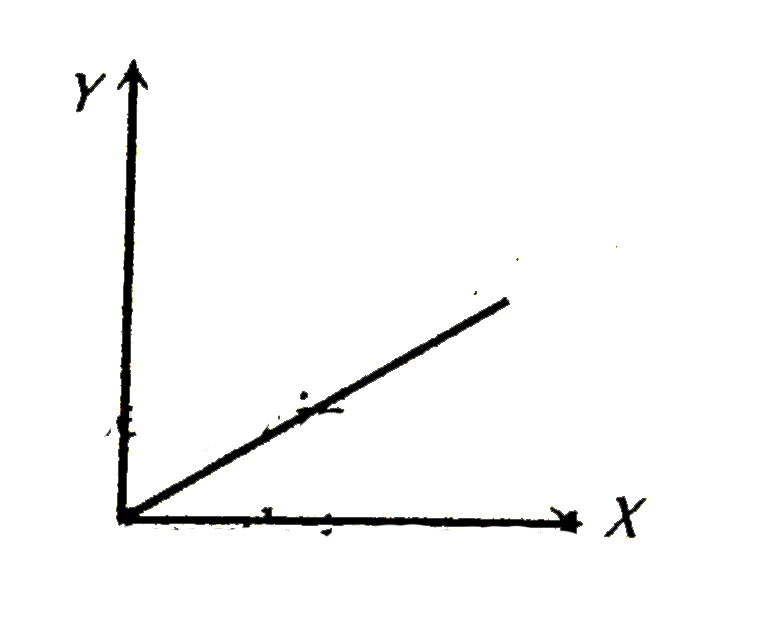A metal sphere of radius 1 mm and mass 50 mg falls vertically in glycerine. Find the viscous force exerted by the glycerine on the sphere when the speed of the sphere is 1cms−1,Density of glycerine =1260kgm−3 and its coefficient of viscosity at room temperature = 8.0 poise.Solution in Tamil
The correct Answer is:A, B, C, D
r=1mm=10−3m
v=10−2ms
η=8poise=0.8 decapoise
=m=50mg=50x10−3kg
σ=1260kgm3
a. viscous force =6πηrv
=6×(3.14)x(0.8)×(10−3×(10−2)
=1.50×10−4N
h. Hydrostatic force =B=(43)πr2σg
=(4⋅3)×(3.14)×(10−9)×1260×10
=5.275×10−5N
c. πηrv+(43)πr3ρ=mg
→v=mg−43πr^2σg6πηr
=50×10−343×3.14×10−6×1260x106×3.14×0.8×10−3
=500−43×3.14×10−3×1260×10)6×3.14×0.8
=2.3cmsec
Topper's Solved these Questions
- BOOK - HC VERMACHAPTER - SOME MECHANICAL PROPERTIES OF MATTEREXERCISE - Objective-27videos
SOME MECHANICAL PROPERTIES OF MATTER
- BOOK - HC VERMACHAPTER - SIMPLE HARMONIC MOTIONEXERCISE - Exercises58videos
SIMPLE HARMONIC MOTION
- BOOK - HC VERMACHAPTER - SOUND WAVESEXERCISE - All Questions139videos
SOUND WAVES
Similar Questions
A student plots a graph from his reading on the determination of Young's modulus of a metal wire but forgets to label. The quantities on X and Y may be respectively.
 11:59View Solution
11:59View SolutionA particle executes simple harmonic motion with an amplitude of 10 cm and time period 6s. At t=0 it is at position x=5 cm going towards positive x-direction. Write the equation for the displacement x at time t. Find the magnitude of the acceleration of the particle at t=4s.
01:57View SolutionA wave of wavelength 0.60 cm is produced in air and it travels at a speed of 300 ms^-1. Will it be audible?
02:07View SolutionA metal sphere of radius 1 mm and mass 50 mg falls vertically in glycerine. Find (a) the viscous force exerted by the glycerine on the sphere when the speed of the sphere is 1 cm s-1, (b) the hydrostatic force exerted by the glycerine on the sphere and (c) the terminal velocity with which the sphere will move down without acceleration. Density of glycerine =1260kgm^-3 and its coefficient of viscosity at room temperature = 8.0 poise.
03:32View SolutionA metal sphere of radius 1 mm falls vertically in glycerine Find the viscous force exerted by the glycerine on the sphere when the speed of the sphere is 1cm−1 For glycerine . η=8.0poise .
05:55View SolutionA tiny sphere of mass m and density x is dropped in a jar of glycerine of density y. When the sphere aquires terminal velocity, the magnitude of the viscous force acting on it is :
09:00View Solutionएक छोटा गोला जिसका द्रव्यमान m तथा घनत्व d1 है एक ग्लिसरीन भरे पात्र में डाला जाता है । कुछ समय पश्चात गोले का वेग स्थिर हो जाता है । यदि ग्लिसरीन का घनत्व d2 है, तो गोले पर लगने वाले श्यान-बल की गणना कीजिए ।
04:27View Solutionएक छोटा गोला जिसका द्रव्यमान M तथा घनत्व d1 है, एक ग्लिसरीन भरे पात्र में डाला है । कुछ समय पश्चात गोले का वेग स्थिर हो जाता है । यदि ग्लिसरीन का घनत्व d2 है, तो गोले पर कार्य करने वाला श्यान-बल होगा :
02:10View Solution1 mm त्रिज्या तथा 50 mg द्रव्यमान वाली धातु कि एक गोलाकार वस्तु ग्लिसरीन में ऊर्ध्वाधर गिरायी जाती है । ग्लिसरीन का घनत्व 1260 kg/m3 तथा उसका श्यानता गुणांक 3.0 poise है ।
(a) जब वस्तु कि चाल 1 cm/s हो , उस समय ग्लिसरीन द्वारा उस पर लगाया गया श्यानता बल निकाले ।
(b) ग्लिसरीन द्वारा वस्तु पर लगा उत्प्लावन बल निकाले ।
(c ) ग्लिसरीन में वस्तु कि सीमांत चाल निकाले ।03:10View Solutionस्टील की 2 मिमी त्रिज्या की एक गोली ग्लिसरीन में गिर रही है | इस गोली का सीमान्त वेग ज्ञात कीजिए | स्टील का घनत्व =8×103 किग्रा/मी3, ग्लिसरीन का घनत्व =1.2×103 किग्रा/मी3, ग्लिसरीन का श्यानता गुणांक = 0.85 किग्रा मी−1से−1 तथा =9.8 मी/से2 |
05:56View SolutionA spherical ball of steel of radius 2 mm is falling down through glycerine. Determine the terminal velocity of the ball. Specific gravities of steel and glycerine are 8 and 1.3 respectively . Coefficient of viscosity of glycerine, eta=8.3 poise.
View SolutionFind the terminal velocity of a steel ball 2 mm in diameter falling through glycerine. Relative density of steel is 8, relative density of glycerine is 1.3 and viscosity of glycerine is 8.3 poise.
04:44View SolutionA metal sphere of radius 1 mm and mass 50 mg falls vertically in glycerine. Find (a) the viscous force exerted by the glycerine on the sphere when the speed of the sphere is 1cms−1, (b) the hydrostatic force exerted by the glycerine on the sphere and (c) the terminal velocity with which the sphere will move down without acceleration. Density of glycerine =1260kgm−3 and its coefficient of viscosity at room temperature = 8.0 poise.
03:54View SolutionA metal sphere of radius 1 mm and mass 50 mg falls vertically in glycerine, the viscous force exerted by the glycerine on the sphere when the speed of the sphere is 1ms−1 is (density of glycerine is 1260kg/m2 coefficient of viscosity at room temperature is 8 poise) F orliny .
02:15View SolutionA metal sphere of radius 1 mm and mass 50 mg falls vertically in glycerine. Find (a) the viscous force exerted by the glycerine on the sphere when the speed of the sphere is 1 cm s-1, (b) the hydrostatic force exerted by the glycerine on the sphere and (c) the terminal velocity with which the sphere will move down without acceleration. Density of glycerine =1260kgm−3 and its coefficient of viscosity at room temperature = 8.0 poise.
03:31View SolutionA small metal ball of diameter 4mm and density 10.5g/cm3 in dropped in glycerine of density 1.5g/cm3. The ball attains a terminal velocity of 8cms−1. The coefficient of viscosity of glycerine is
05:55View Solution

